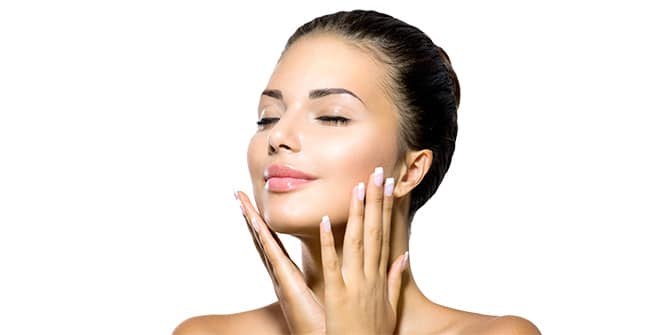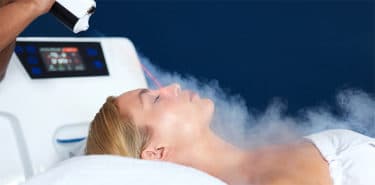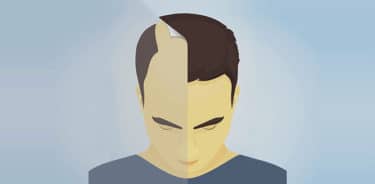Mesotherapy is a non-surgical treatment technique using needles. Any healthy individual over 18 years old can benefit from this treatment except pregnant-breastfeeding women, insulin-dependent diabetes or cancer patients. It works well for chronic-acute pain such as migraine, menstrual pains, sports injuries, skin-hair problems, vascular diseases or rheumatic diseases. A medicated solution is injected into the middle layer of the skin in the problem area. The content of this solution may vary depending on the case and the area to be treated. There are many types of mesotherapy according to the injection technique of the needle and the area of use. Nowadays, needle-free mesotherapy techniques are used, especially in cosmetic treatment.
Table of Contents
What is mesotherapy?
Mesotherapy is a non-surgical treatment technique that involves injecting drug mixtures into the middle layer of the skin, which ensures that the drugs act quickly in small amounts. In 1952, it was developed by a Frenchman, Michel Pistor, to treat vascular and infectious diseases, sports injuries, increase circulation and relieve pain.
Mesotherapy, a treatment technique commonly used in cosmetic dermatology, comes from the Latin words meso (middle) and therapy, and refers to moderate skin therapy.
How does mesotherapy work?
Drug mixtures used in mesotherapy are prepared from hyaluronic acid, antioxidants, vitamins, minerals, hormones, enzymes and amino acids. Transferring these substances directly to the skin helps to renew the skin by stimulating the structures such as collagen and elastin, and administering blood circulation, lymphatic circulation and immune response in the concerned area. The more accurate rates are obtained, and the more sessions are performed, the more successful the results will be.

Benefits of mesotherapy
- Removes skin problems such as wrinkles, cracks, spots or cellulite problems.
- It can relieve chronic-acute pain.
- Prevents baldness and treat some hair problems, such as alepsia.
- It can help some rheumatic infections and vascular diseases.
- It can heal injuries of sportsmen.
Uses of mesotherapy
Pain treatment
Traditional mesotherapy helps as a pain reliever in many other acute/chronic pain syndromes such as fibromyalgia, gout, neuralgia, cervicobrachial syndrome, migraine or menstrual pain. It can also be applied to muscle inflammations such as bursitis myositis, sprains, and sports injuries. Salmon calcitonin obtained from salmon is one of the most commonly used drugs in the treatment of painful bone disorders from osteoporosis to cancer.
Rheumatic diseases
Mesotherapy helps treat rheumatic diseases, inflammatory and painful fluid build-up in the joints. The problems experienced would be eliminated quickly by injecting the drug mixture prepared for this purpose directly into the concerned area.
Vascular diseases
Mesotherapy helps treat leg vascular diseases such as varicose veins caused by circulatory disorders. Extracts of plants such as artichoke, ginko biloba, melilotus (donkey clover) are added to the drug mixture.
Procedure of mesotherapy
Mesotherapy uses very fine needles for injecting a series of special solutions to the middle layer of the skin. The main objective is to solve the basic problems such as inflammation and poor blood circulation that cause skin damage. There is no standard solution formula in mesotherapy. Many different vitamins, minerals, plant extracts can be used according to the person’s problem.
How to apply mesotherapy?
- The diagnosis of the patient is made after a physical examination, the patient’s general health, his/her medical history and a blood-urine test.
- Mesotherapy is not a surgery, nevertheless anesthetic cream is applied before the procedure.
- A series of injections is given to the patient using a special micro needle, which is attached to a mechanical gun to make multiple injections in succession.
- Injections are given to a depth of 1-4 mm depending on the treatment area. The doctor inserts the needle at an angle to the skin or shakes the wrist quickly while injecting.
- Each injection gives only a small drop of solution to the skin. Several mesotherapy sessions (3-15 times) may be needed to achieve the desired effect.
- Mesotherapy is an outpatient treatment. The patient may return to normal life within a few hours unless any side effects occur.
- It usually does not require a dressing, but a check-up may be needed between sessions.
- Mesotherapy does not apply to people under the age of 18, pregnant and breastfeeding women, insulin-dependent patients, people who experienced stroke, heart and cancer patients receiving multi-drug therapy, and people with liver or kidney disorders.
Types of mesotherapy
There are 3 different types of mesotherapy depending on injection technique of the needle: point by point, comprehensive and upper skin injections. Mesotherapy is also divided into body, face and hair mesotherapy. In addition, mesotherapy can be divided into needle and needle-free mesotherapy.
Face and body mesotherapy
It deals with the problems of acne and acne scars, all kinds of birth or aging related skin spots, scars developing on the skin, puberty or birth related cracks, or skin disorders such as shingles. It can also rejuvenate the face and improve skin color.
Procedure of face and body mesotherapy
- One drop of hyaluronic acid is injected directly to the first and middle layers of the skin. This helps feed and rejuvenate cell activity, and also stimulate elastin production with collagen.
- A micro needle is used to inject the drug mixture into the area, and a series of injections follows it. Depending on the problem, injections can be delivered to about 1 to 4 millimeters deep into the skin. 6-10 sessions are performed with one week intervals for more effective results.
- Topical anesthesia may be applied to the areas to be treated based on the level of pain threshold of the patient. Local anesthesia is performed by putting anesthetic cream on the skin for 30-40 minutes before half an hour before mesotherapy. Mesotherapy session takes between 20-45 minutes depending on the size of the area to cover.
- Recovery time partially depends on the patient. Some patients may return to their routines on the same day, while others may experience severe swelling and discomfort.
- Some superficial swellings and tiny needle marks can be observed after 24-48 hours after the procedure. Recovery around the eyes may take a little longer.
The patient’s photographs are taken and simulations are performed on them and the estimated image can be given after cosmetic mesotherapy treatments.
Benefits of face and body mesotherapy
- Increases the moisture content of the skin to make it look fuller, hard and healthy,
- Increases skin’s firmness and elasticity in the hands and the neck,
- Solves all pigmentation problems including freckles, and improves skin color,
- Purifies the skin from all blemishes, stretch marks and skin wounds,
- Eliminates dark circles under eyes;
- Prevents wrinkles,
- Brightens dull, tired look of the skin,
- Treats cellulite and dissolves regional fat.
Although mesotherapy’s fat removal procedure is proposed as a non-surgical alternative to liposuction, it is not FDA approved, because there is very limited scientific research on the use of mesotherapy for fat removal.
Hair mesotherapy
Hair mesotherapy is a non-surgical cosmetic hair restoration process, which is used in the treatment of hair problems such as baldness, hair loss, or ringworm. Most hair loss problems originate from nutritional deficiencies, decreased blood circulation in the scalp, hormone imbalances around hair follicles, and loss of androgen DHT; the treatment is based on finding the solution for these problems.
Hair mesotherapy procedure
- Superficial micro injections are placed in the middle layer approximately 1 mm deep after the first layer of skin to stimulate the natural regeneration and growth of hair.
- Treatment against hair loss is specific to the patient. One session lasts 10-30 minutes depending on the size of the area to cover. Usually plant extracts, vitamins or drugs such as finasteride approved for the treatment of hair are applied on the scalp.
- At least 10 intensive treatment sessions can be performed every 2 weeks for the first 2-3 months to stimulate the growth of scalp cells and to form the environment for the scalp. After three months, session breaks may be extended.
- People may start getting positive results in the first few weeks of the treatment. This period may be longer depending on the severity of hair loss and how the individual responds to treatment. Patients may see significant results in the first 2-3 months of treatment, but the full effect of the treatment is seen after 6 months.
Hair mesotherapy can be a suitable treatment particularly for people with hereditary baldness. It is effective in both men and women.
Benefits of hair mesotherapy
- Reduces hair loss.
- Stimulates hair growth.
- Prevents hair breakage.
- Accelerates the formation of new hair follicles.
- Repairs damaged tissues on scalp.
- Reduces dandruff.
- Improves blood circulation in the scalp.
What is needle-free mesotherapy?
Needle-free mesotherapy uses high-frequency ultrasound technology in combination with traditional mesotherapy solutions, and offers a pain-free solution to people sensitive to treatment. The ultrasonic device delivers the drug mixture to the skin without the need for a needle. It also allows the cell membranes to be temporarily permeable so that the cell can absorb nutrients from the solution.
It is usually applied in facial rejuvenation, wrinkle reduction, body tightening, moisture balance, or hair treatment. Less side effects are observed, since injection is not used. There are other devices and applications, such as meso peeling, used in needle-free mesotherapy. However, according to research, these are not as successful as needle mesotherapy. Drugs can only be delivered to the middle layer effectively by means of needles. Needle-free mesotherapy should be carefully investigated as an option.
Side effects and risks of mesotherapy
- Nausea and vomiting
- Diarrhea
- Mild pain in the treated area
- Increased skin sensitivity
- Swelling
- Burning sensation, itching
- Erythema
- Bruising
- Pigmentation problems such as dark spots in the treated area or red marks of injection
- Hypersensitive skin reactions such as rash
- Infection and edema from it
- Rarely bleeding
Side effects do not last long, and may vary from one patient to another. Since some people may have allergic reactions to some drugs used in mesotherapy, an allergy test should be performed 24 hours before treatment.
Costs of mesotherapy
Mesotherapy costs may vary depending on the type of treatment, the number of sessions, the condition of the patient, the doctor’s expertise, the hospital or clinical conditions, and the location. Cosmetic mesotherapy prices are always higher.
How to choose a mesotherapy clinic and doctors?
Mesotherapy should be performed in a reputable clinic by a licensed dermatologist specialized in mesotherapy. Some specialist nurses may also apply this treatment. Clinics without a license applying this treatment should be avoided.
Suggestions for mesotherapy
- Mesotherapy is not a complex process, but every step should be clearly discussed with the mesotherapy doctor before the application.
- The use of aspirin and other non-steroidal anti-inflammatory drugs (NSAIDs) should be stopped at least 1 week before the treatment.
- Patients should eat healthy and avoid high protein foods, caffeine, alcohol and cigarettes.
- The treated area should not be contacted with water for 10-15 hours after the session.
- Swelling, redness and bruises can be minimized by applying cold compresses to injection sites and adjacent sites. Compresses can be prepared from cold chamomile tea; ice packs can also be effective.
- The treated area should not be scratched and tight clothes should not be worn.
- To minimize the possibility of infection development, hygiene and physician’s instructions should be strictly followed and the doctor should be informed immediately if infection is suspected.
- Movements that force the treated area should be avoided 48 hours after each session.
- The patient should not wear any make-up for a while, should not go in the sun, or solarium.
- After injections, swelling and irritation can be reduced by lightly massaging the area with vitamin K.
- Exercising 30-50 minutes 2-3 times a week may enforce mesotherapy treatment.
- Some additional treatments such as massage therapy may be asked for the effects of mesotherapy to be long lasting.
- Afterwards, the patient must follow the doctor’s instructions.




